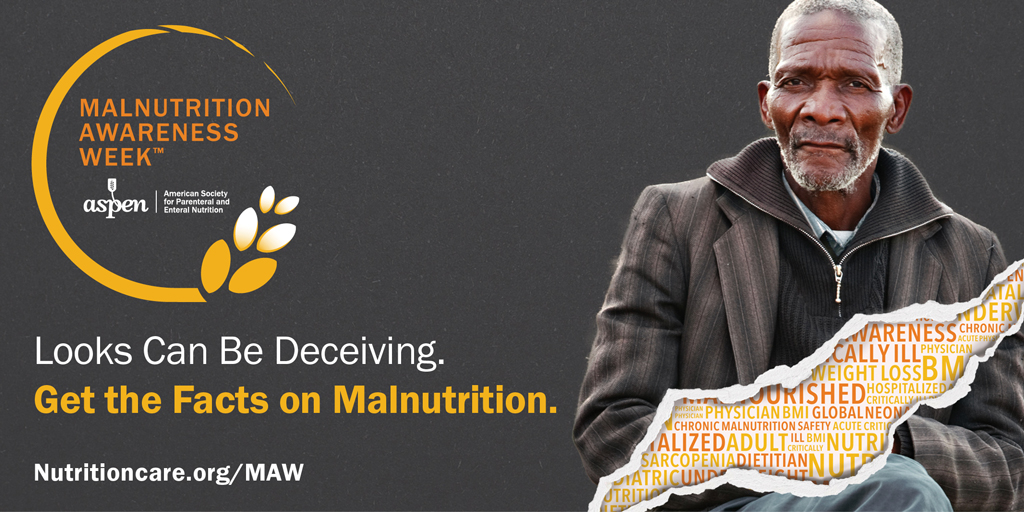Twenty to 50 percent of older-adults admitted to the hospital have existing malnutrition (Barker, 2011). However, those who are well-nourished at admission are not exempt from development of malnutrition during their hospital stay. Increase in nutrient needs due to injury or illness, decreased appetite from one or more causes (nausea, vomiting, diarrhea, constipation, pain, etc.), and weight loss put patients of all ages at risk. For that reason, we actively screen all our patients for malnutrition upon admission to Magee.
Malnutrition Awareness Week was created by the American Society for Parenteral and Enteral Nutrition (ASPEN) to:
- Educate healthcare professionals to identify and treat for malnutrition earlier
- Educate consumers/patients to discuss their nutrition status with healthcare professionals
- Increase awareness of nutrition’s role on patient recovery
Malnutrition is significant as it leads to several negative outcomes: increased length of stay (Izawa, 2006), health care costs (Correia, 2003), complications, falls, and readmissions (Normal, 2008). Decreased appetite and food/liquid intake, unintentional weight loss, loss of lean body mass, loss of body fat, fluid accumulation and decrease in functional status or grip strength are all signs which may indicate malnutrition in the hospital setting (White, 2012). Assessment for malnutrition is completed by a Registered Dietitian.
Malnutrition & You
Those living in the community are not immune to development of malnutrition either. Chronic illnesses, such as diabetes, kidney disease, or cancer, increase the risk, in addition to lowered appetite or unexpected weight loss as mentioned above. You or your loved ones may be at risk if you notice or are experiencing:
- unplanned weight loss
- loss of appetite
- not eating or only eating small portions
- feeling weak or tired
- swelling or fluid accumulation
If you are experiencing one or more of these symptoms, speak with a qualified health care provider, such as your primary care physician or a registered dietitian. Malnutrition can be prevented by following a healthy diet which incorporates all food groups from a variety of sources. Per USDA guidelines, adults should aim every day for: 5-6 servings of grains, half of which are whole grain sources; 1 ½ to 2 cups of fruits; 2 to 3 cups of vegetables; 5 to 6 ounces of protein; 3 cups or servings of dairy; and 5 to 7 teaspoons of oils.
To learn more about the important role Clinical Nutrition plays on Team Magee, click here. For more information on Malnutrition Awareness Week, visit https://www.nutritioncare.org/maw.
Citations:
Barker LA, et al. Int J Environ Res Public Health. 2011;8(2):514-527.
Izawa S, et al. Clin Nutr. 2006;25(6):962-967.
Norman K, et al. Clin Nutr. 2008;27(1):5-15.
White, JV et al. Consensus statement: academy of nutrition and dietetics and American society for parenteral and enteral nutrition: characteristics recommended for the identification of adult malnutrition (undernutrition). J PEN. 2012; 36(3):275-283.







